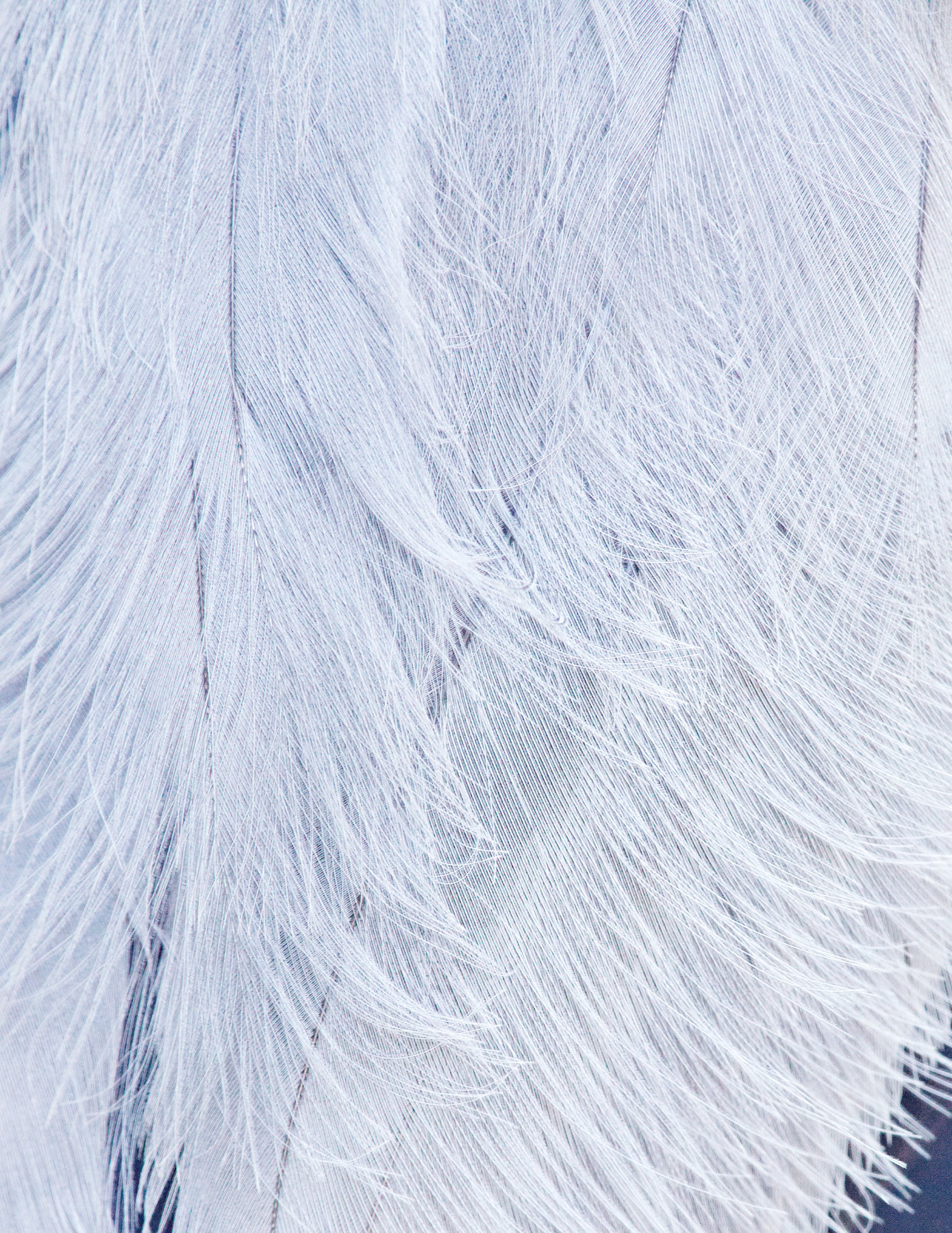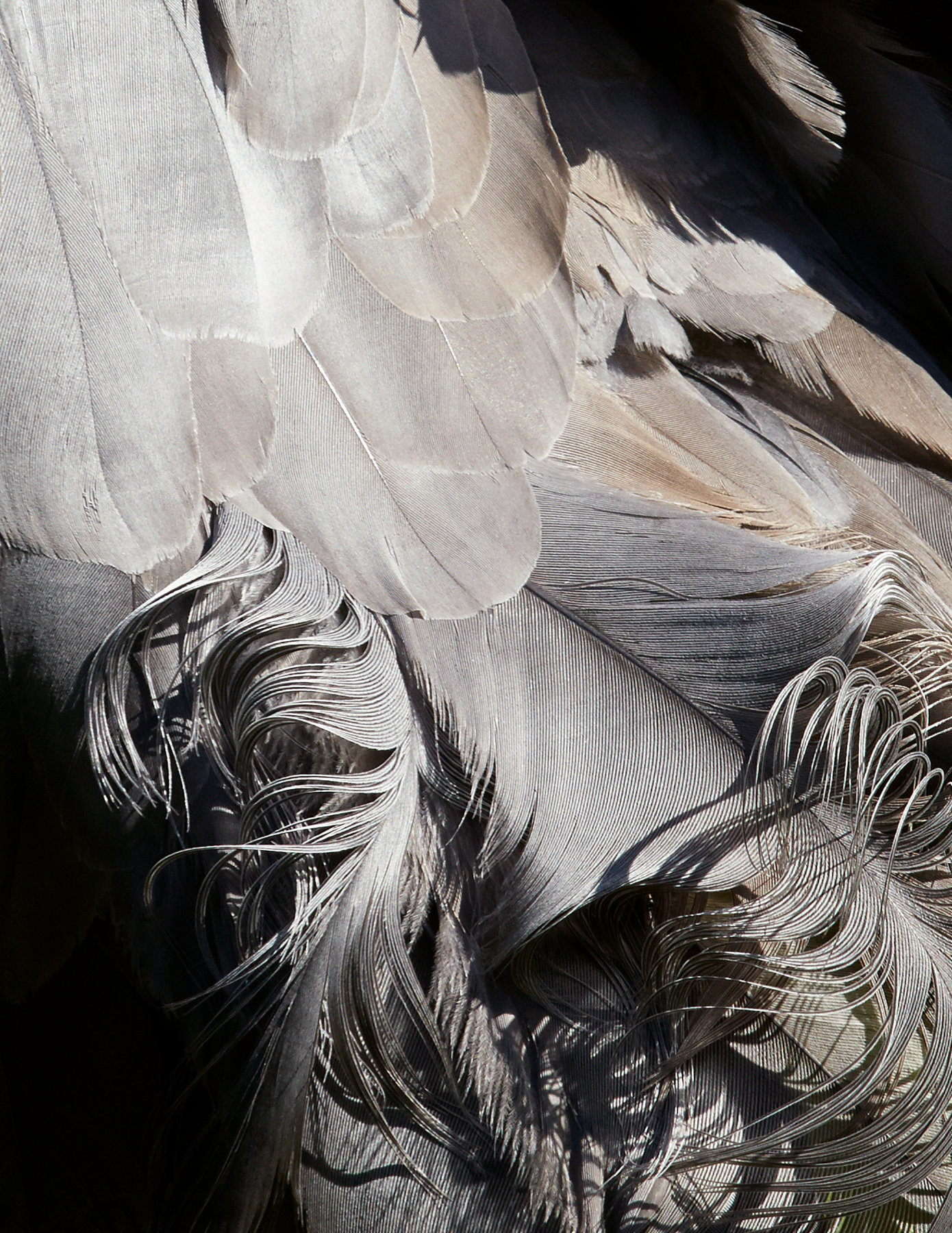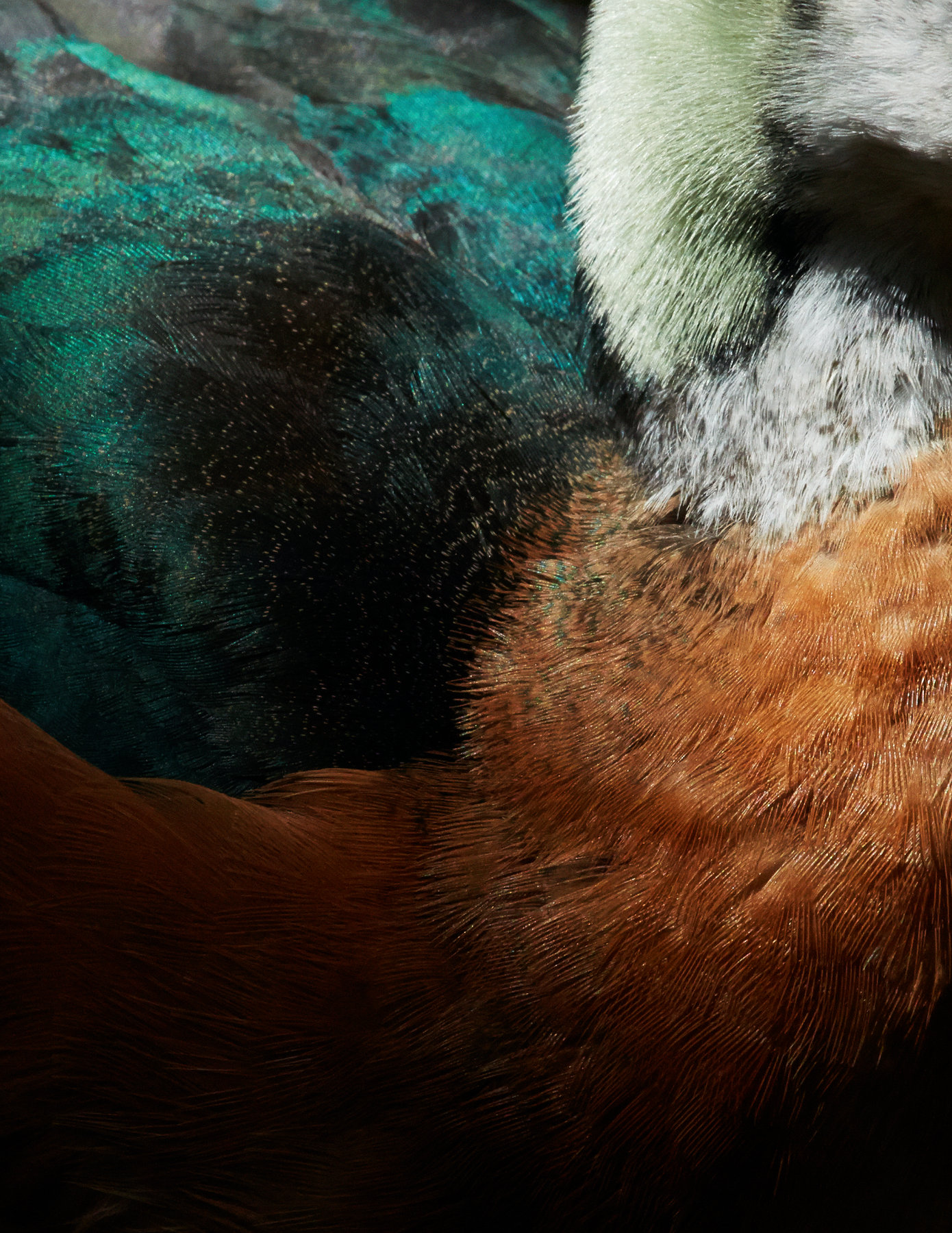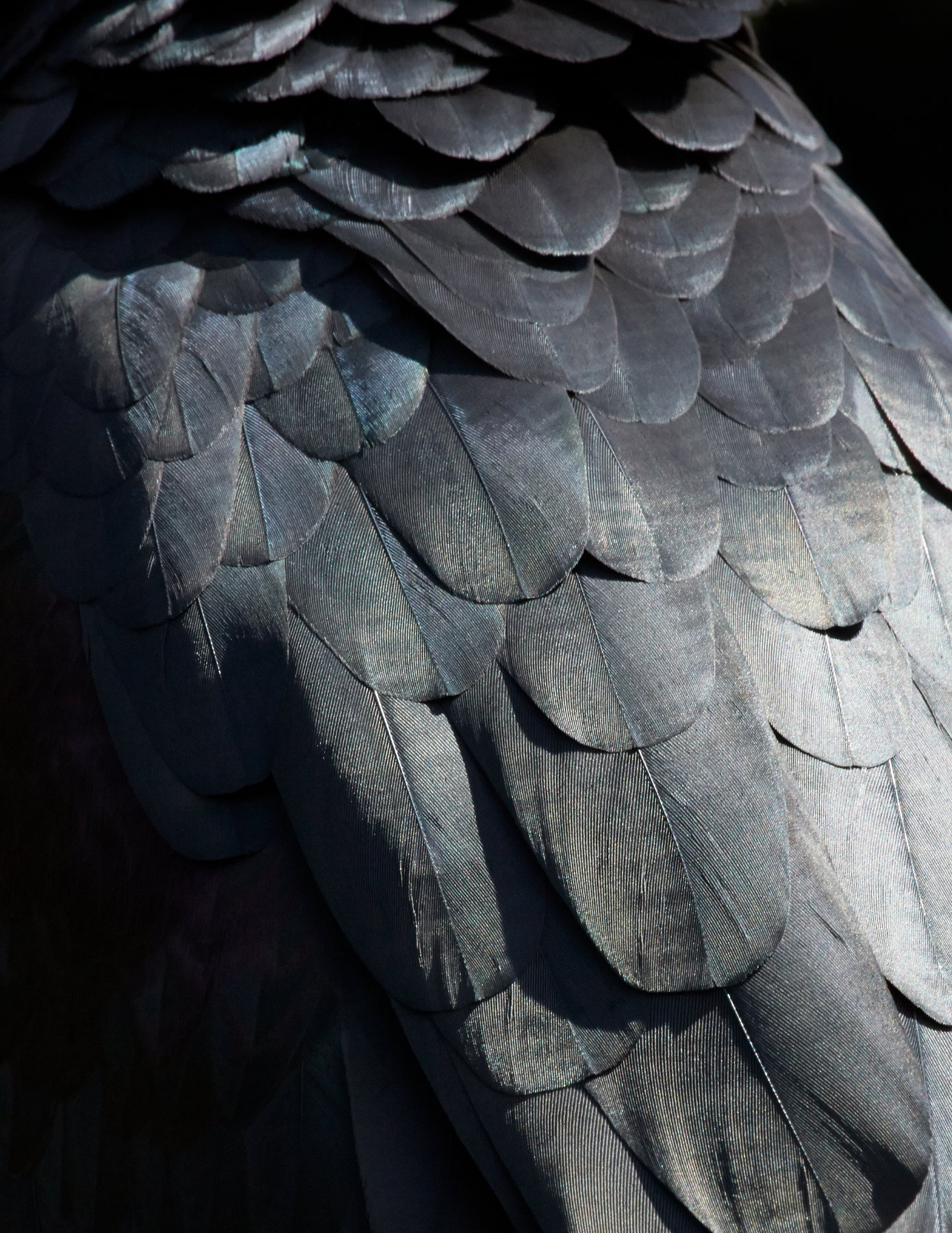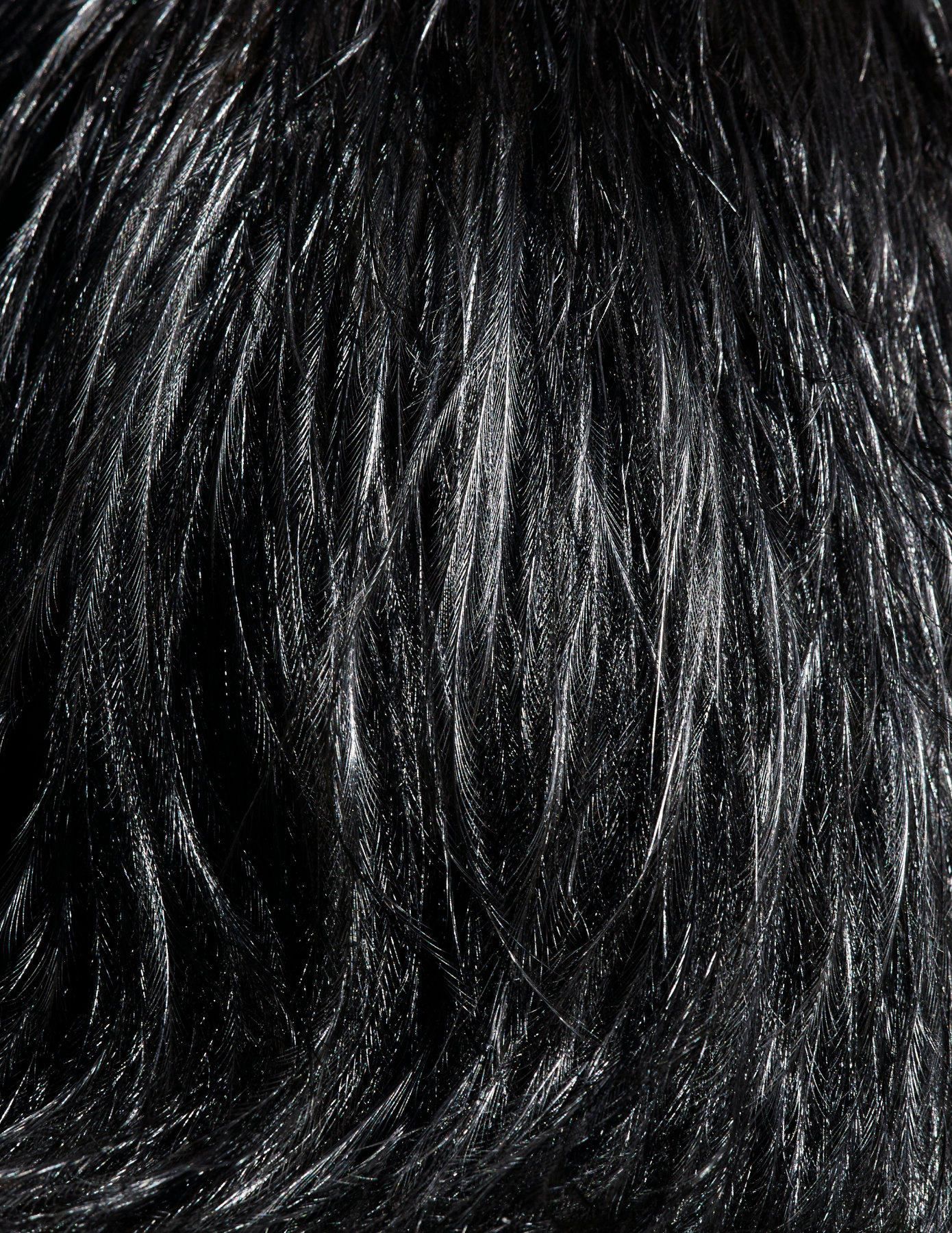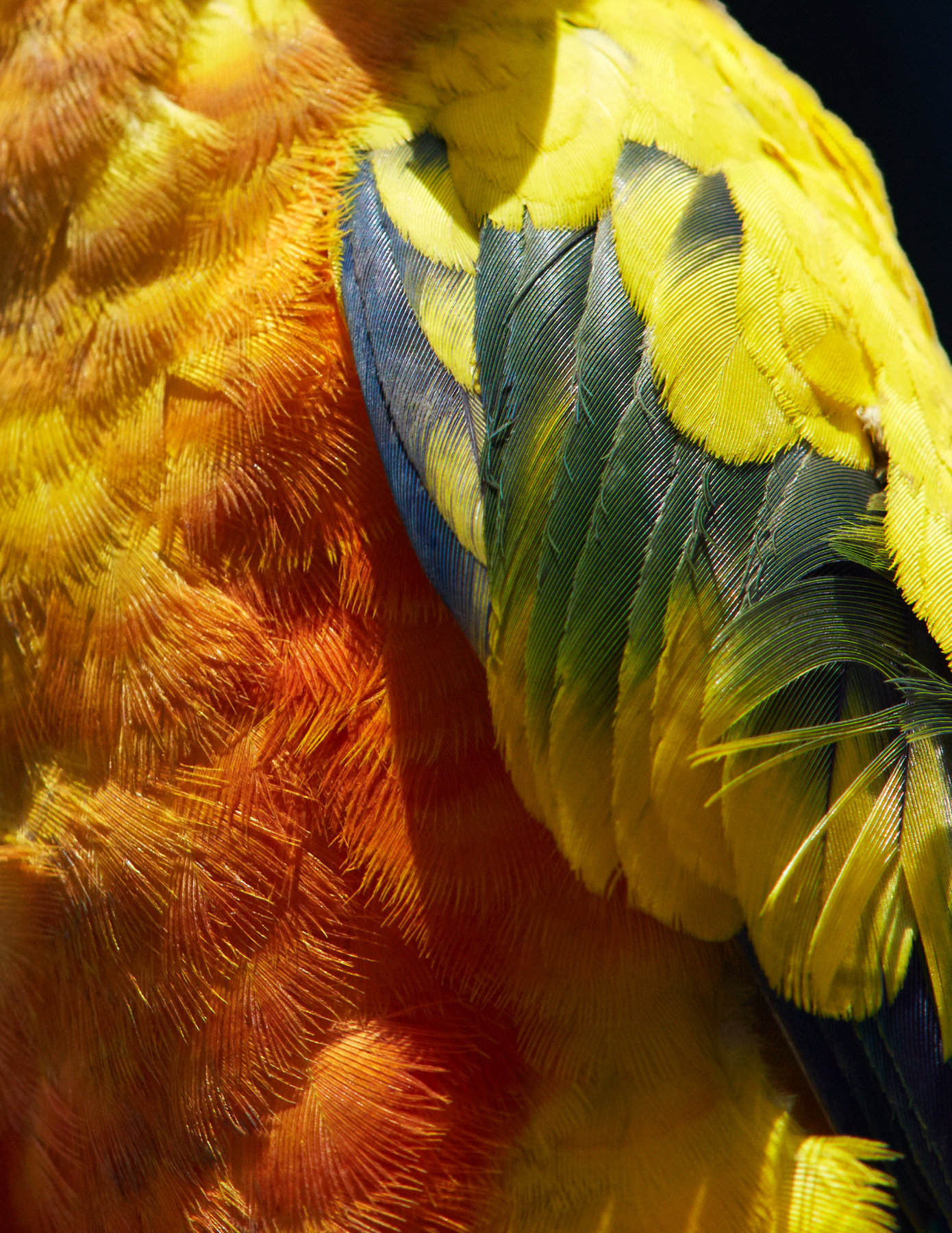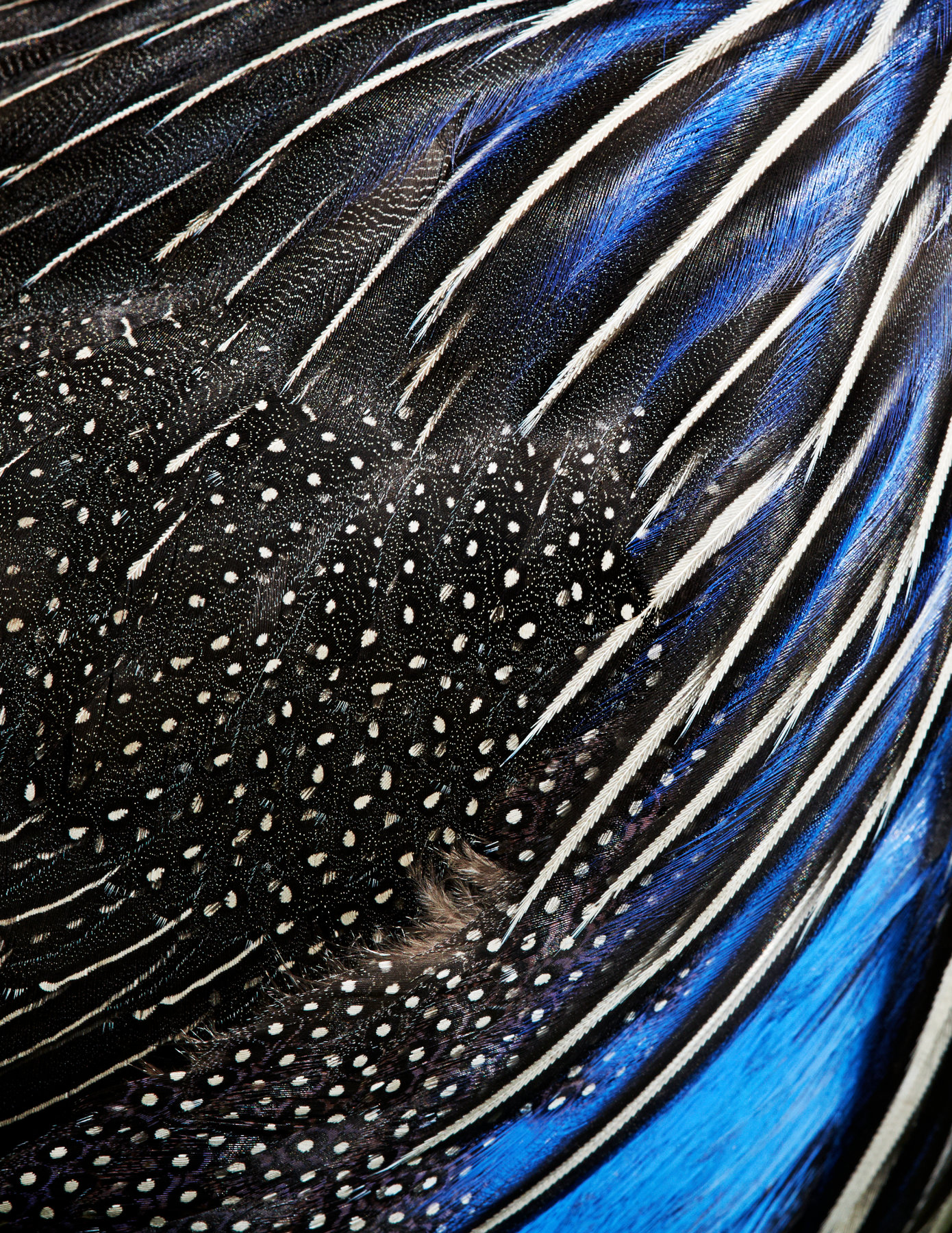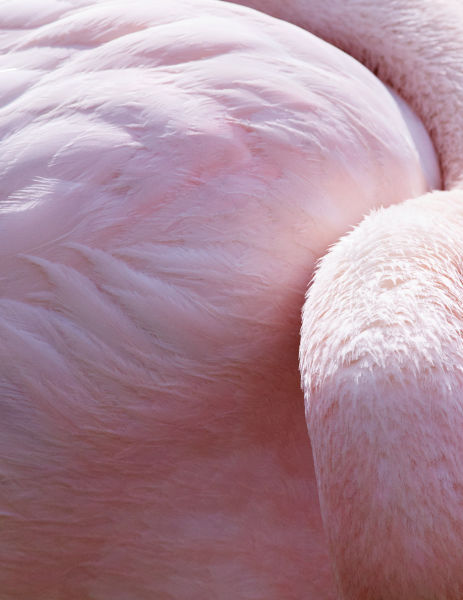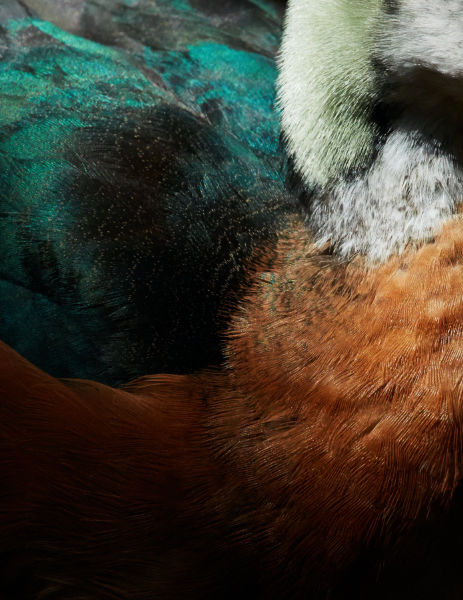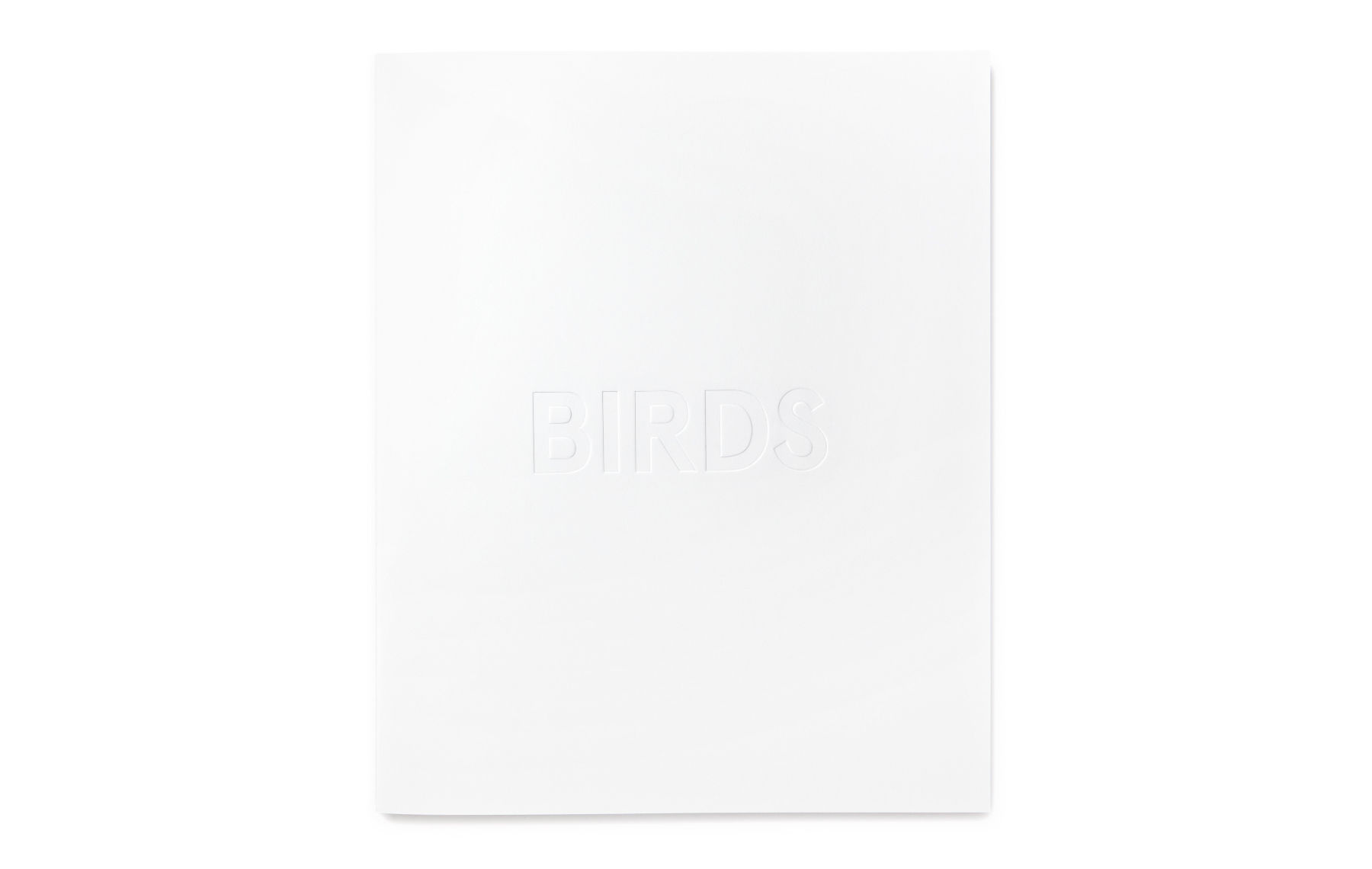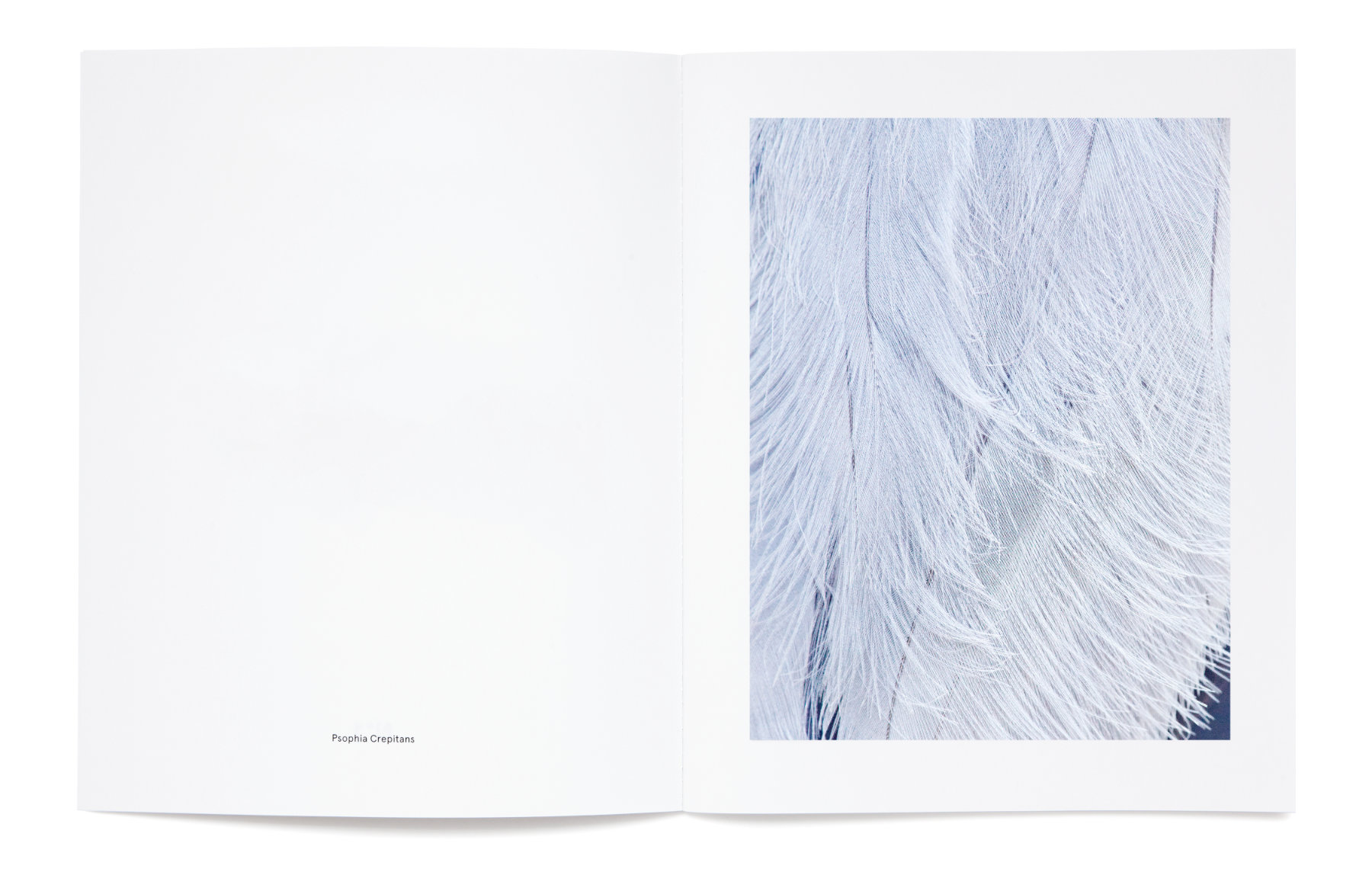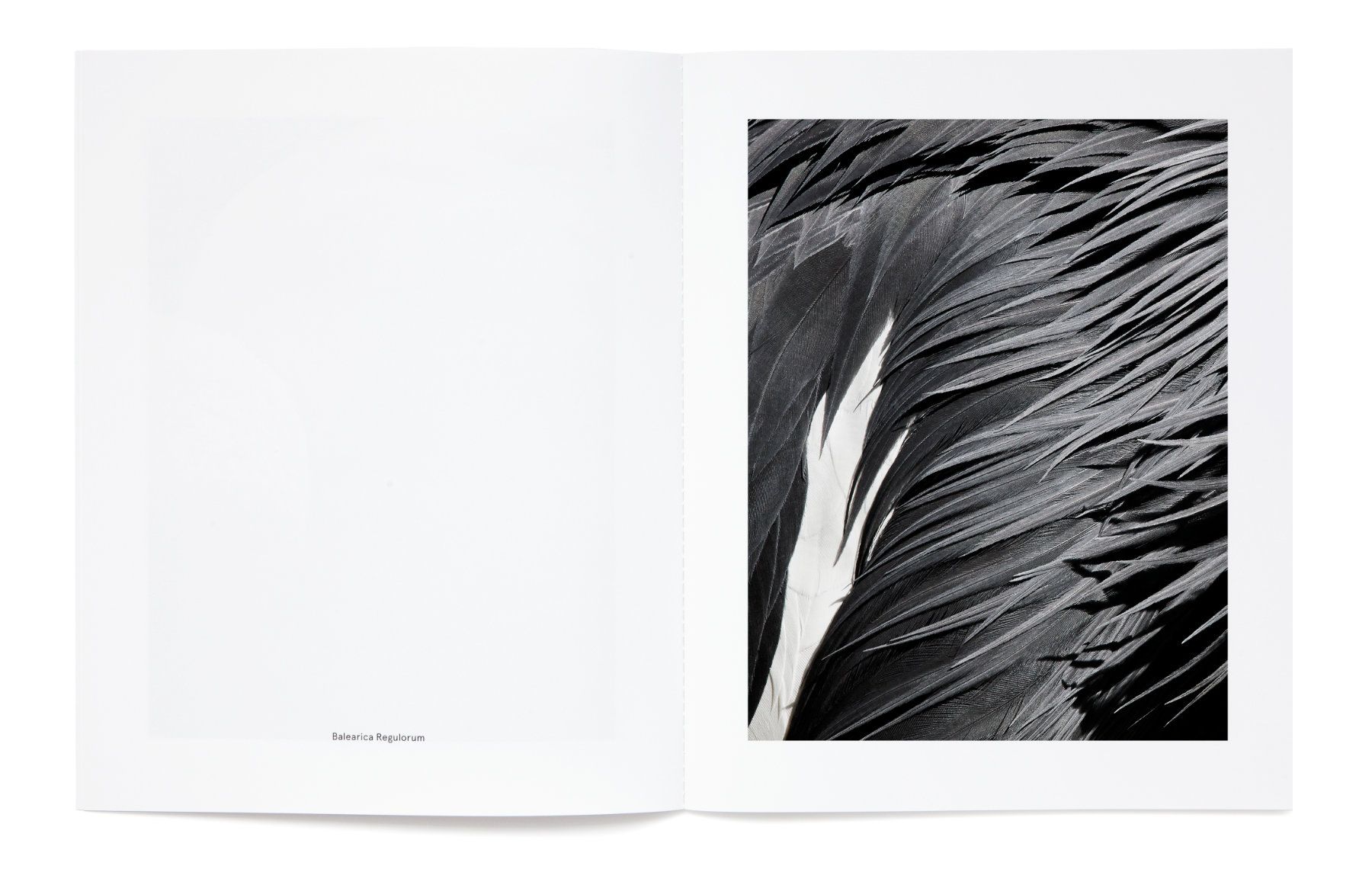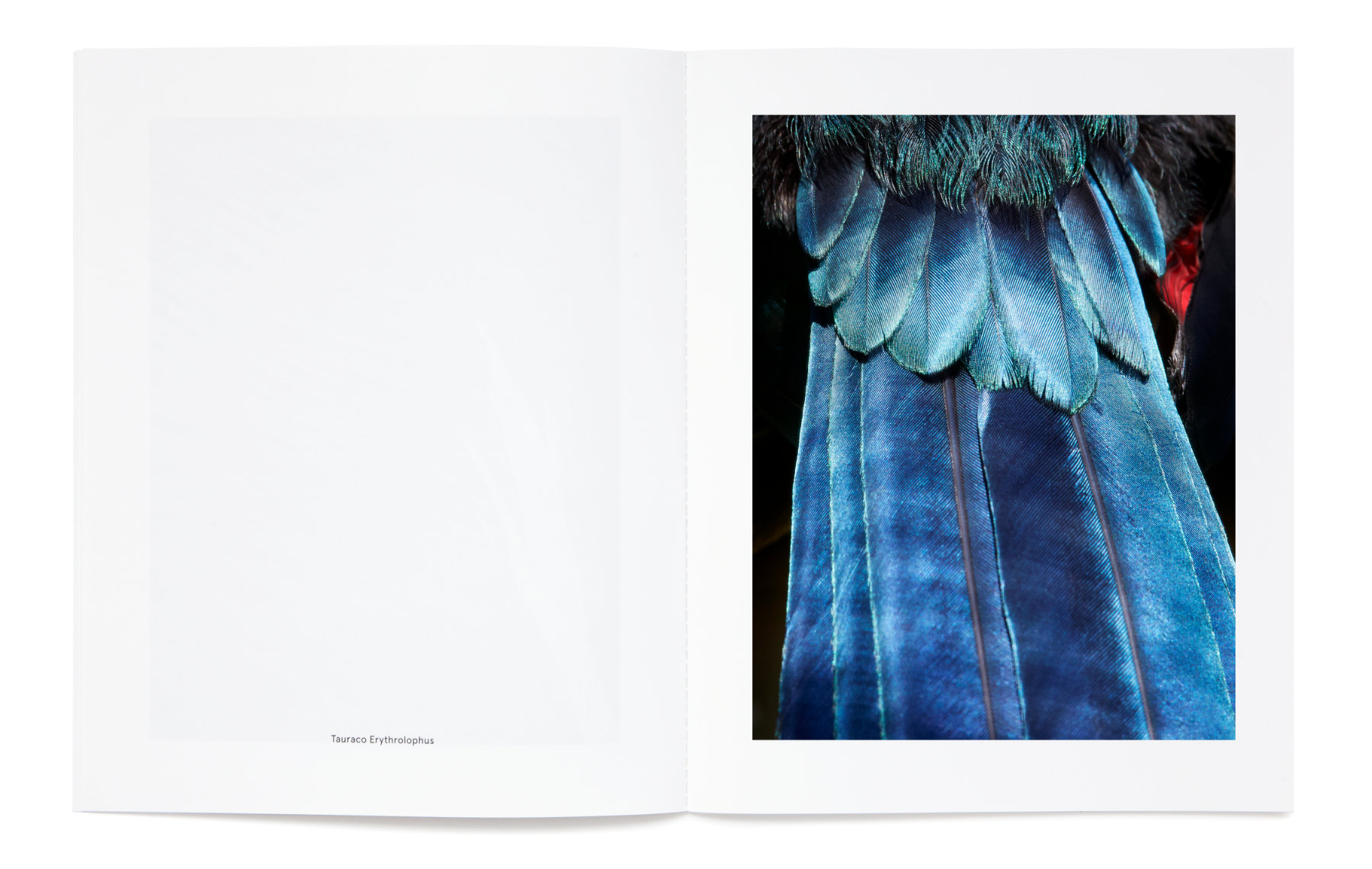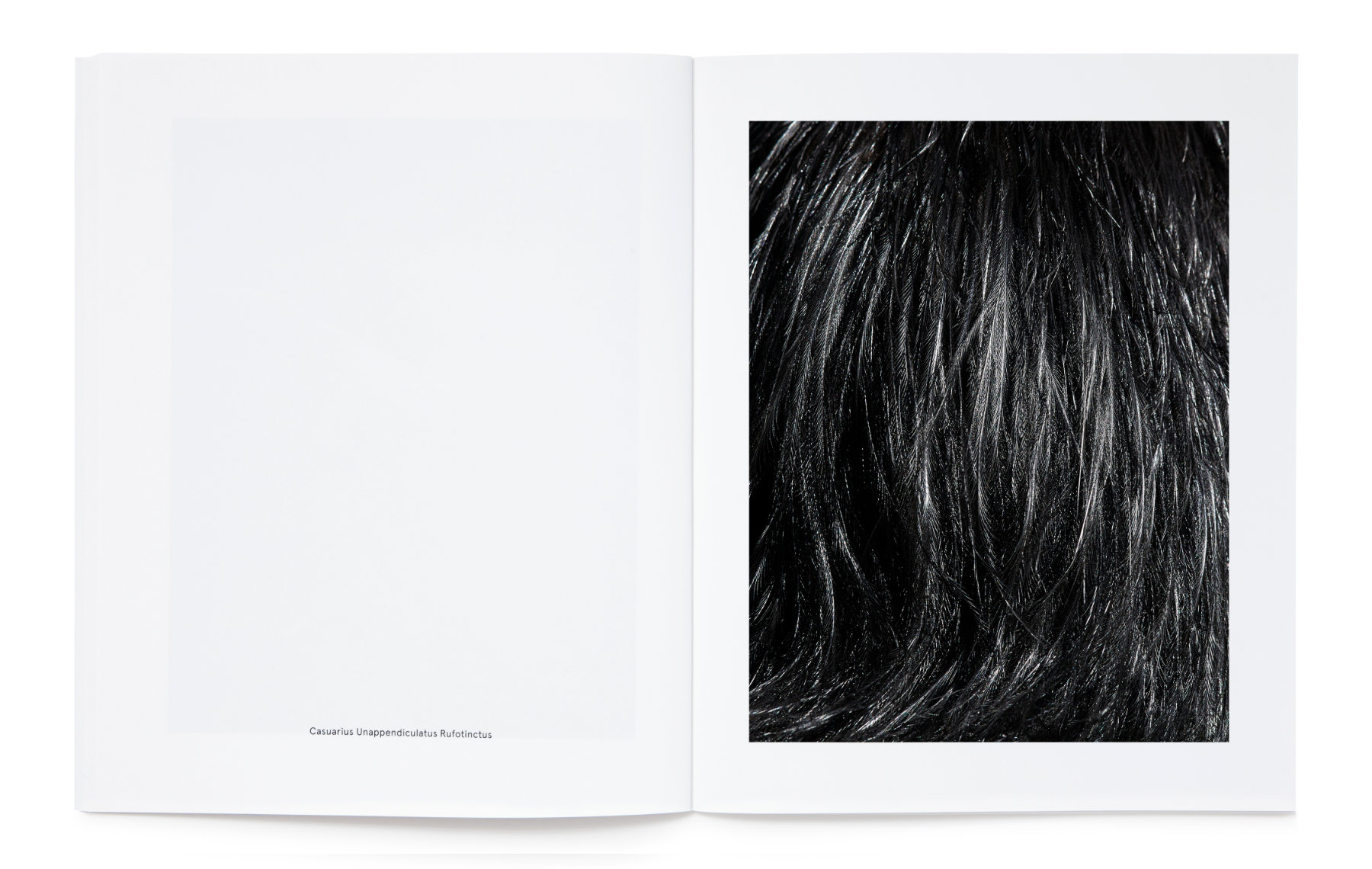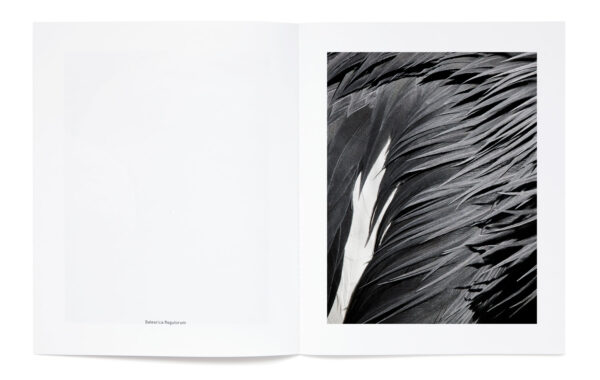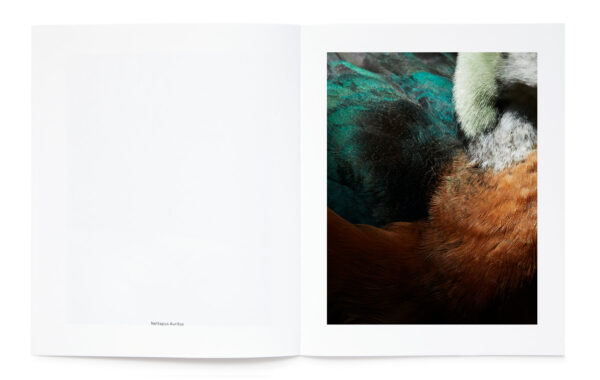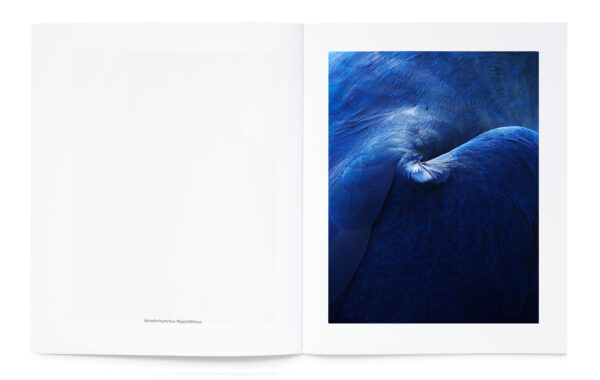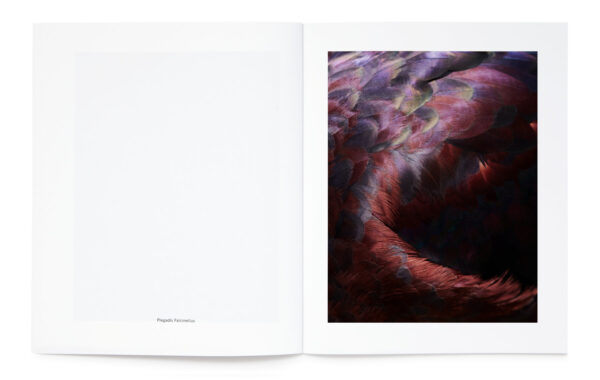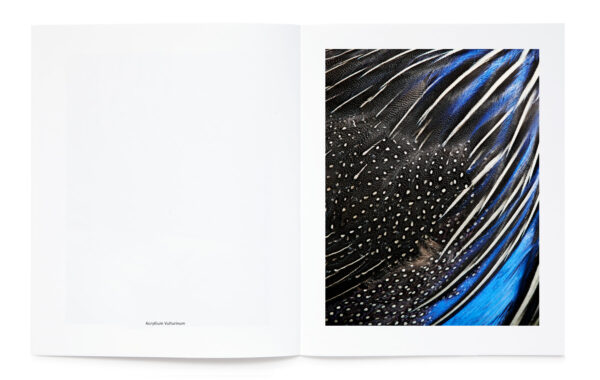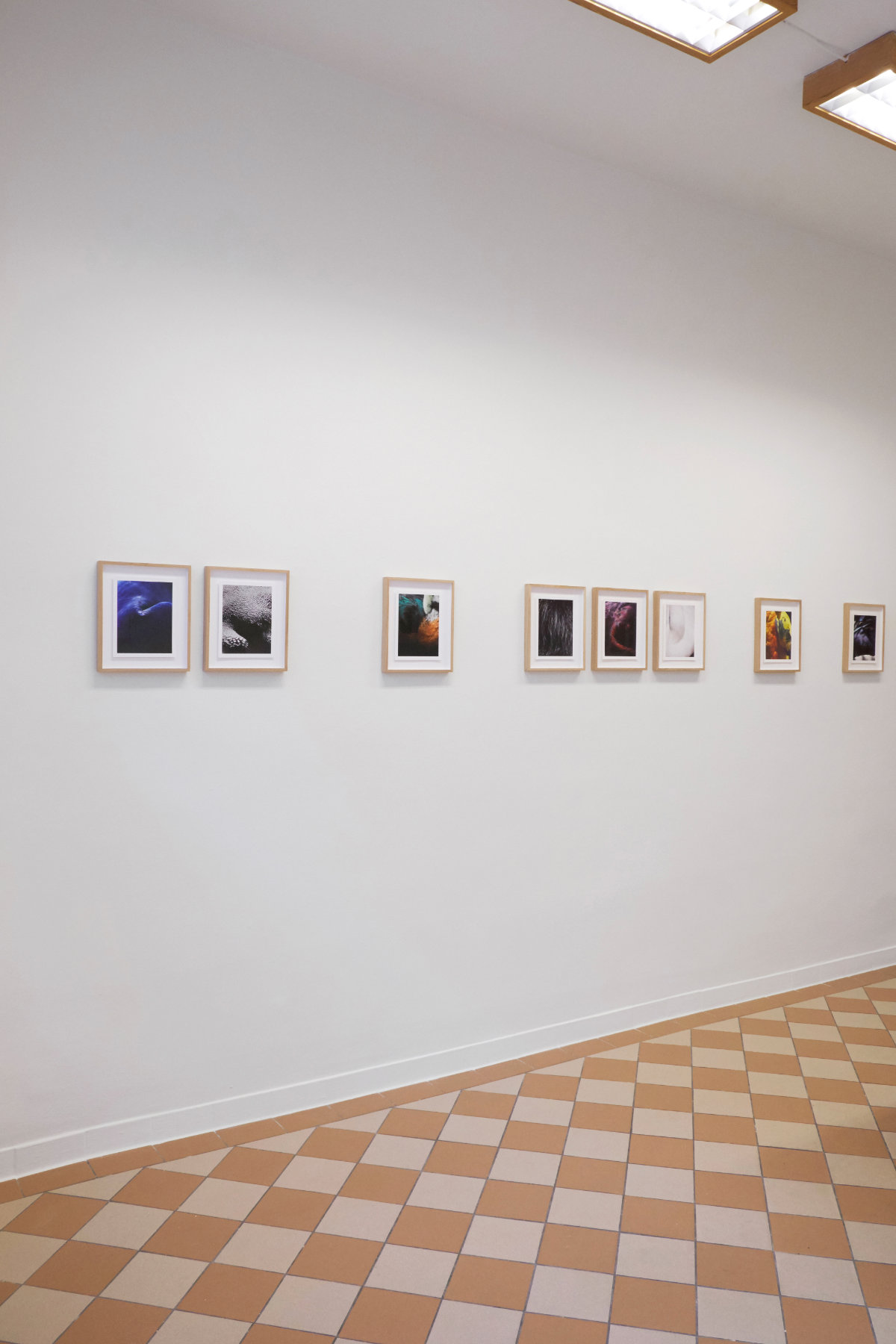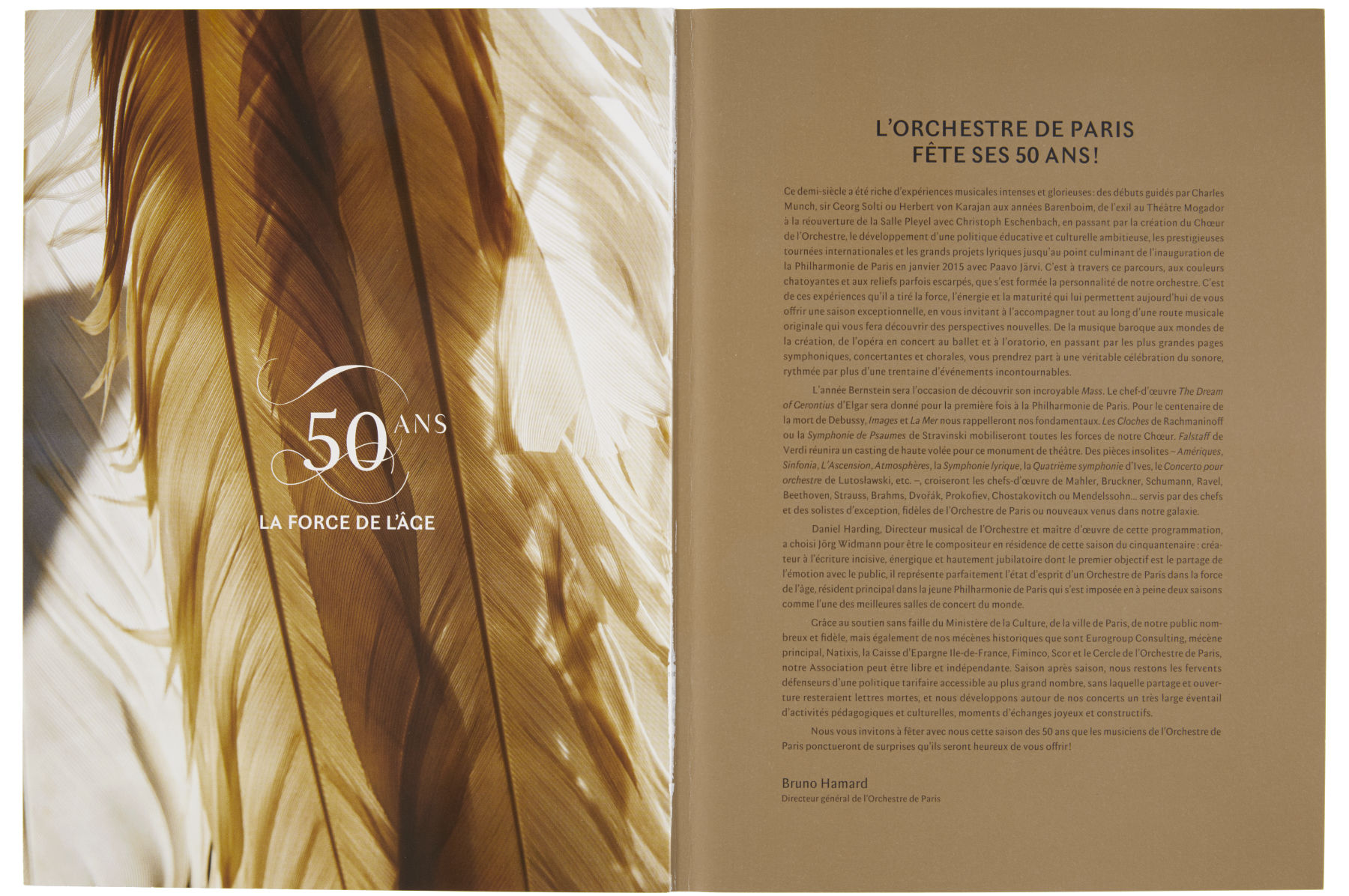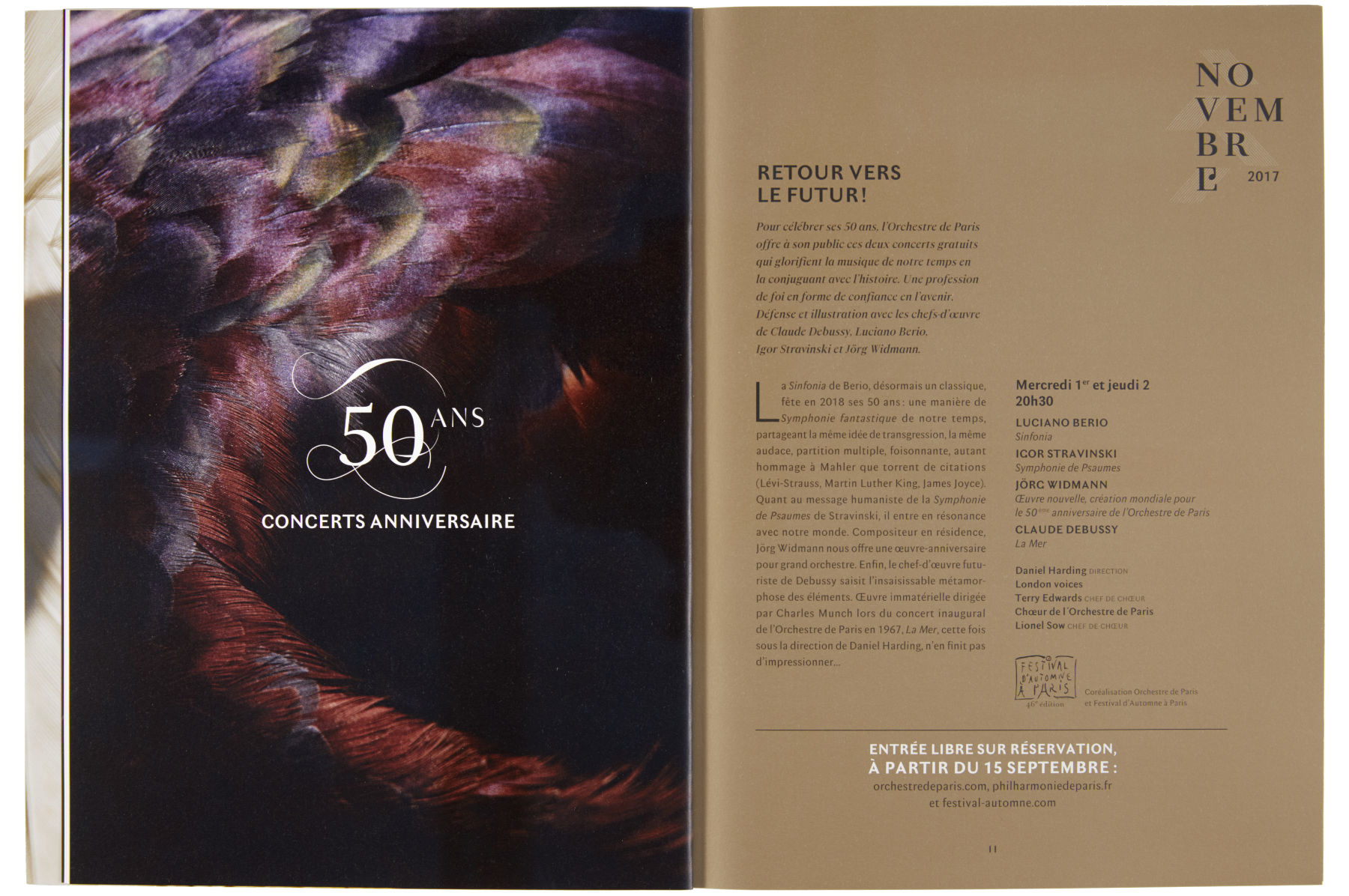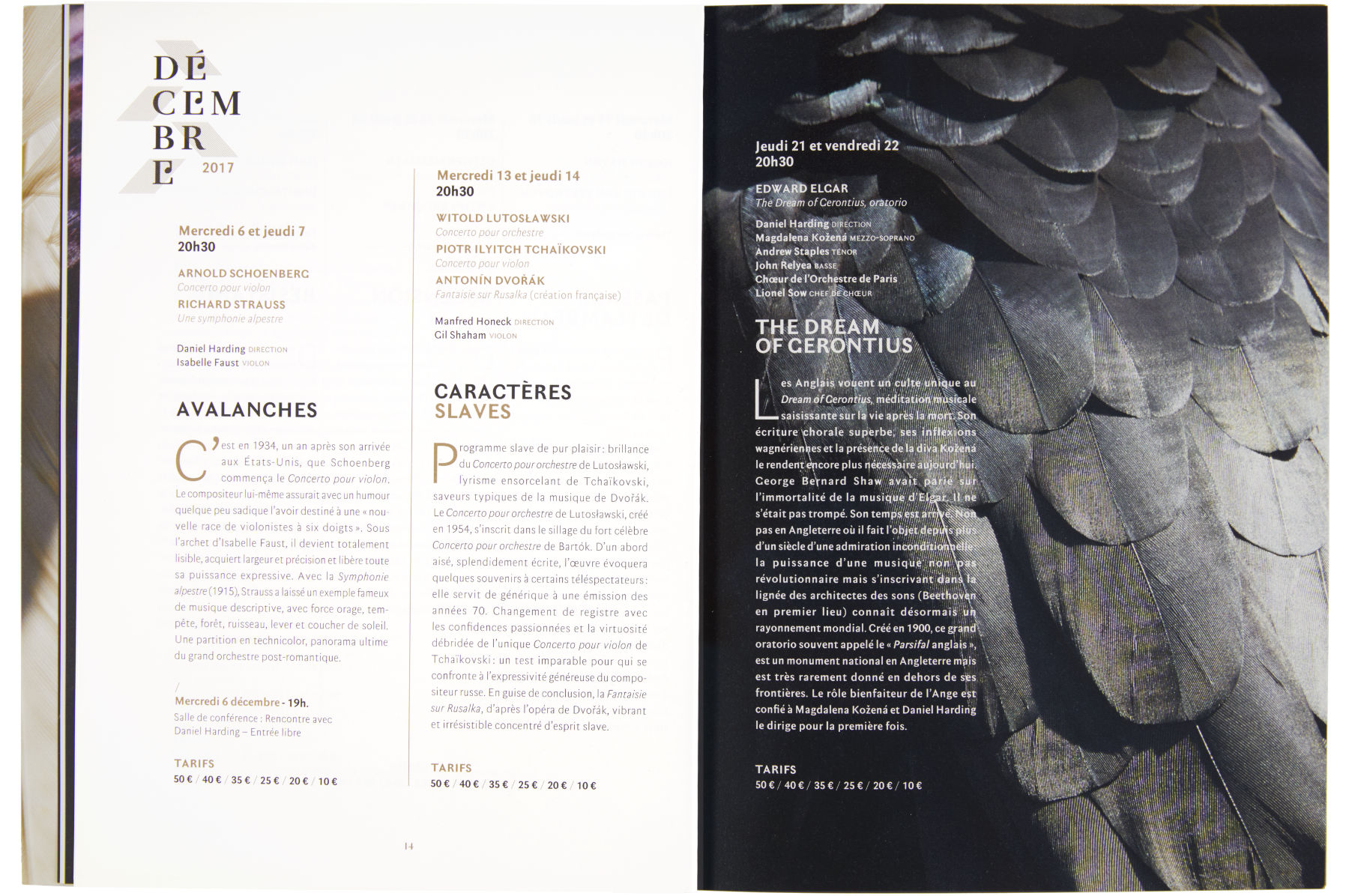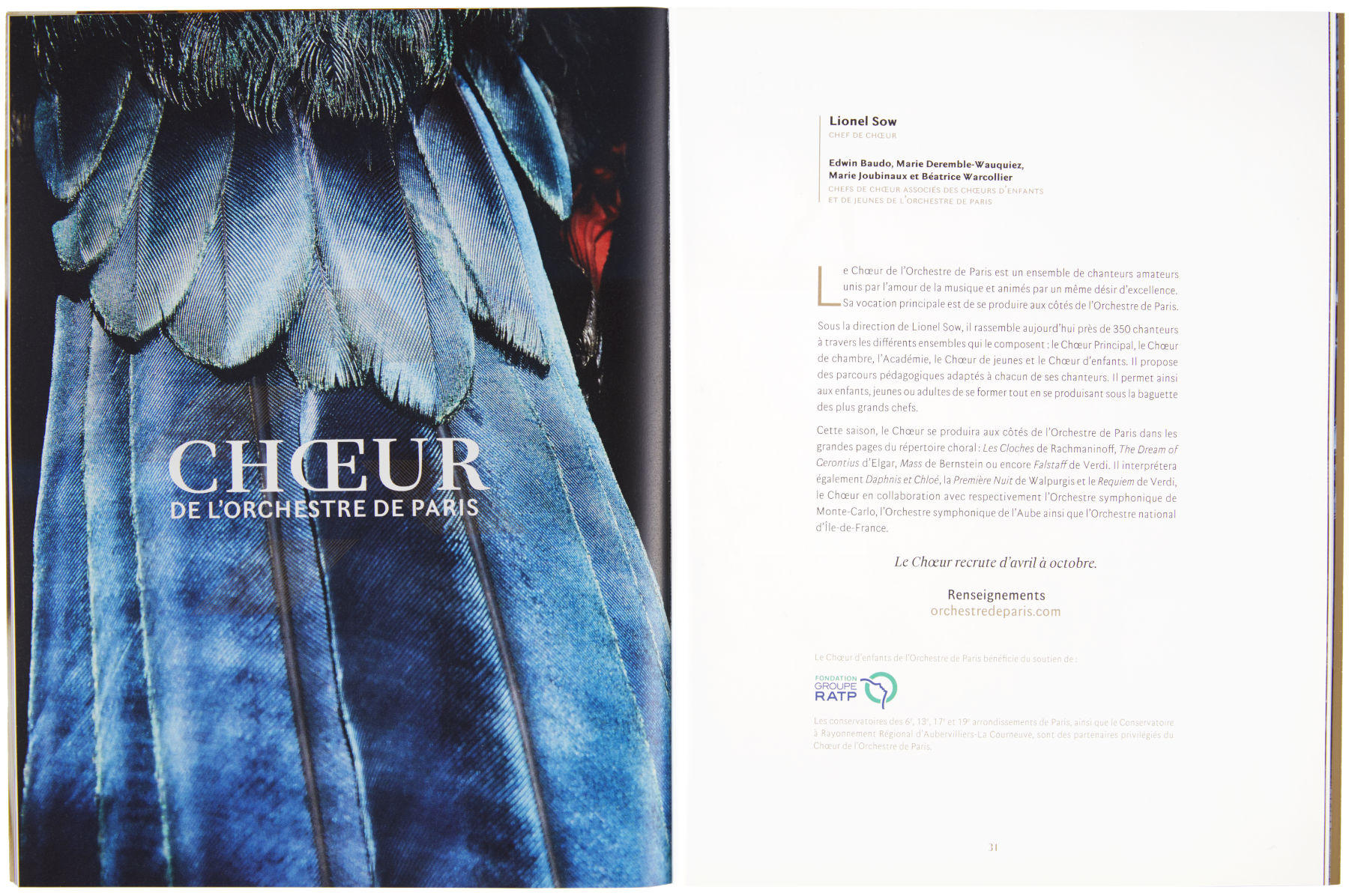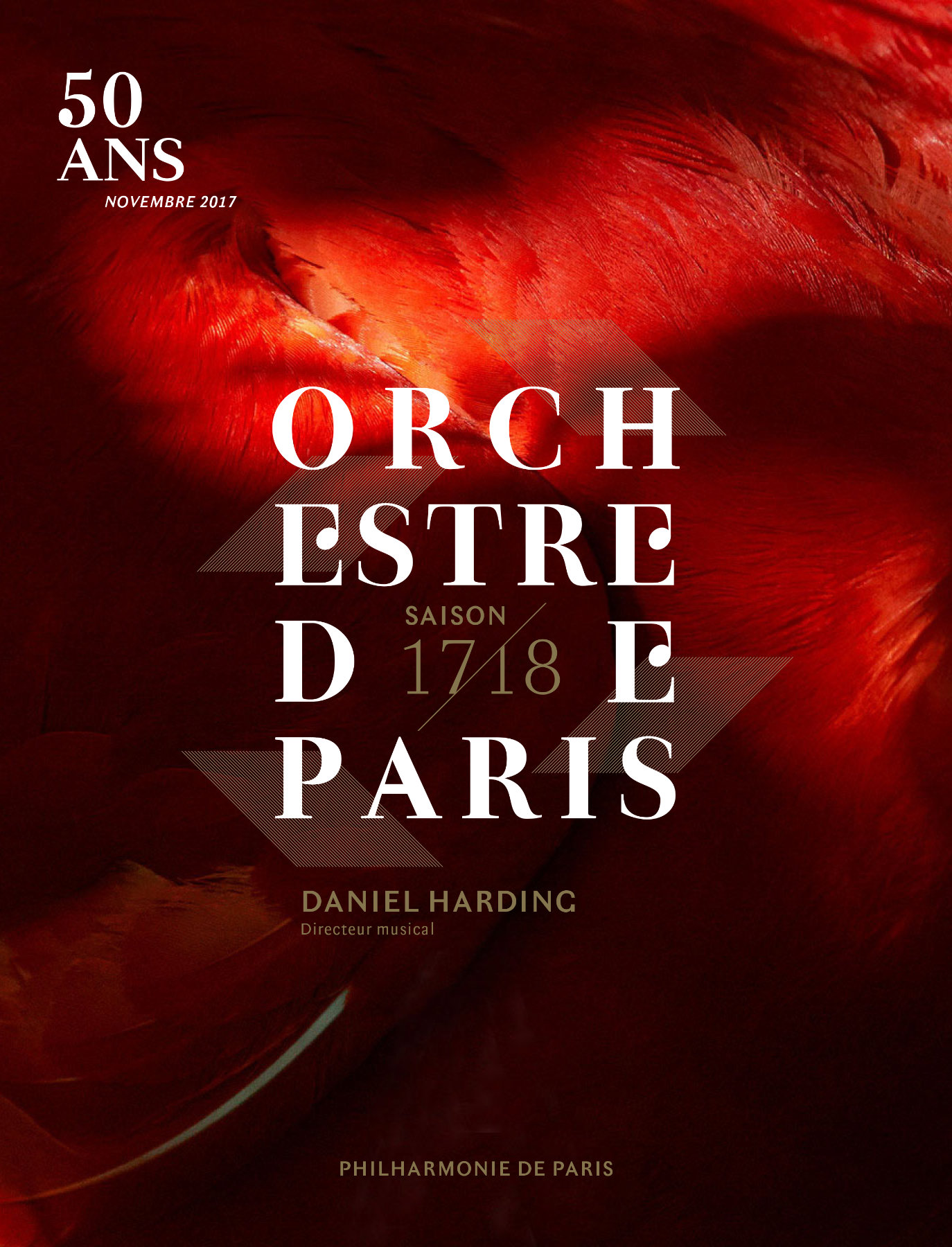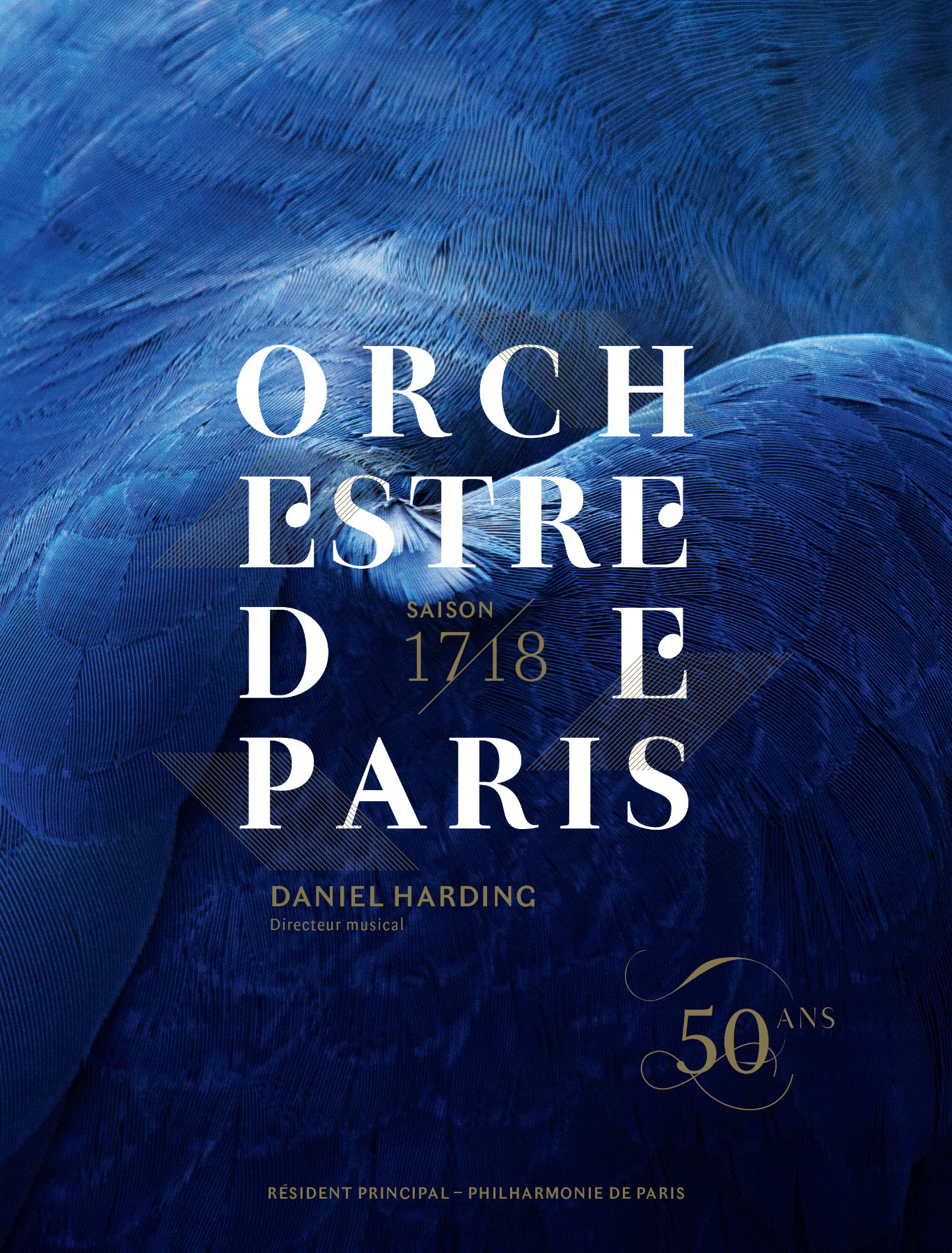Birds is a study of plumage. Lohr visited 80 birds in aviaries across Europe. Undulating variations of texture, color, layer and light are exposed through photographic close-up, framing, and abstraction. A rare proximity to the animals recasts them as patterned flora or inanimate fauna—avian textiles. Between the decorative, documentary, painterly, and zoological, Birds undercuts our expectations about what we see when looking at these strange creatures before we look again.
Book
Birds
Self published, 2015
Art Direction & Book Design Daniel Baer @ Studio Baer
Printing Marcel Meesters @ MM Artbook Printing
Exhibition
Birds (Solo Show)
Galerie für Moderne Fotografie, Berlin
February 16 – April 1, 2017
The series Birds presents photographs of unusual, exotic bird species in close-up. In most images, one can only guess whether the powerful, dark feathers are part of a bird’s tail or wings, or whether the pink-colored downy feathers are found on an animal’s breast or neck. The emphasis on detail highlights the natural and flawless aesthetic of the plumage’s color and texture. Birds are elusive, shy animals. Lohr’s images capture them as they are in life, allowing an uncommon closeness. The truly foreign and what’s never apparent to a great degree in the natural environment is captured and depicted here in a timeless fashion.
Thomas Lohr’s photographs not only invite contemplation but are also capable of arousing scientific curiosity. The series Birds recalls the cabinet of curiosities of sixteenth-century Western art, in which precious items from nature—naturalia, exotica, and mirabilia—were collected. These teeming cabinets served encyclopedic interests, scientific investigation, and, at the same time, expressed admiration for nature’s treasures and the diversity of creation.
Thomas Lohr has photographed about eighty bird species thus far. He finds the animals in bird enclosures and aviaries around Europe, where he photographs them without artificial lighting. His working process makes evident that he photographs living animals and thus, entirely incidentally, that the birds’ plumage is clean and preened, underscoring the cleanness of the images. Thomas Lohr shoots the photos with a digital reflex camera. The images are not reworked.
Thomas Lohr produced the book for the series Birds in collaboration with Daniel Baer. Birds was released in March 2015 as a limited edition of 500 copies. The twenty-one color illustrations are printed on Japanese paper. The photographs are titled after the Latin names of the bird species.
Commisioned
ORCHESTRE DE PARIS
50 years Campaign
Season 17/18
Musical Director Daniel Harding
Contribution
OISEAUX – EXPLORER LE MONDE AILÉ
Publisher Phaidon, 2021
Editor Victoria Clarke
Thomas Lohr, Acryllium vulturinum, an excerpt from the series “Birds”, 2015
Photography, dimensions variable
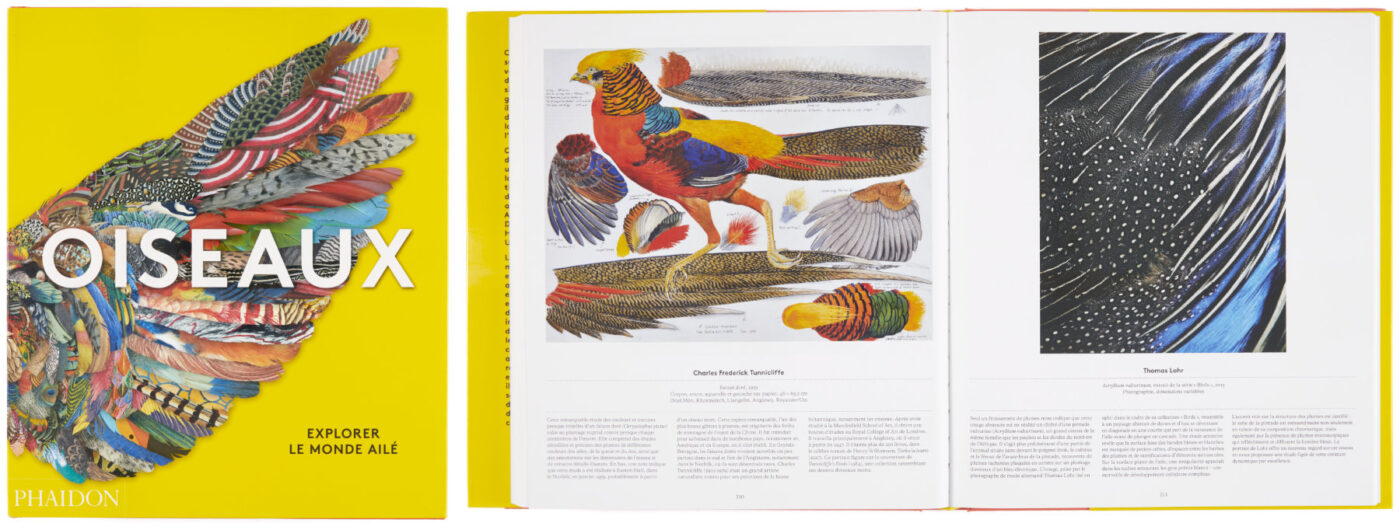
“Only a ruffle of feathers alerts us to the fact that this abstract design is actually part of a vulturine guineafowl, a large bird from northeast Africa related to chickens and turkeys,” explains our new book. “Specifically, we are looking at an area just in front of the bird’s right wrist, the ulna and radius of the guineafowl’s forearm, draped in spotted feathers that are overlaid by a sea of soft, electric-blue plumage. The image, taken by Lohr as part of his collection Birds, presents an abstract landscape of dunes and pools pouring diagonally across the scene, curving in front of the central apex of the wing’s base before cascading away. As we look closer, it becomes clear that the smoothness of the surface of the blue and white stripes is scarred by minute ridges, the gaps between the feathers’ barbs, the thin elements branching from each feather’s shaft and hooking onto its neighbours. On the flat surface of the wing, we begin to see breaks in the spots surrounding the larger white dots (a marvel of complex, cellular development). The focus on the structure of the feathers is appropriate: the guineafowl’s sensational plumage is caused not just by the patterning of pigment but also by the microscopic structure of the feathers, preferentially reflecting and scattering blue light. Lohr’s portrait presents us with a novel view of the bird: a motionless study of the intricate architecture of an inherently dynamic creature.”

In 2015, this German fashion, portrait, and still life photographer turned his usually human-focused lens onto the avian world with the publication of his limited-edition art book Birds (Studio Baer). The initial idea behind the project was to produce a study textures and colors by zooming in on feathers and plumage “to show the beauty of birds while approaching it from a different point of view.” Lohr wanted to show a variety of species and an array of plumage so shot a range of birds, traveling to bird parks and menageries across Europe to establish a stunning, masterfully lit portfolio.
“Birds are inspiring creatures, but with this project I wanted to abstract things and look closer at something kind of surreal that I see when looking at birds’ feathers in real detail” reflects Lohr; in most cases, the pictures only give “an idea of whether the strong, dark feathers belong to the tail or wings of a bird, or whether the pinkish fluff is found on the chest or neck of the animal”.
Each abstract photo of wings, bellies, and other bird parts in the book is also beautifully juxtaposed with its scientific name, a contemplative invitation to go deeper behind the scenes of each species – the supremely tactile contrasting feather types of “Grus Monacha” (a hooded crane), the royal blue coat of “Anodorhynchus Hyacinthinus” (a hyacinth macaw), the elegant capes of “Geronticus Eremita” (a northern bald ibis) or “Pelecanus Crispus” (a Dalmatian pelican), the wispy white feathers of “Psophia Crepitans” (a gray-winged trumpeter), or the soft candy-floss pink plumes of “Phoenicopterus Roseus” (a greater lamingo) and examine our potentially surface-level relationship with the bird world at the same time.
